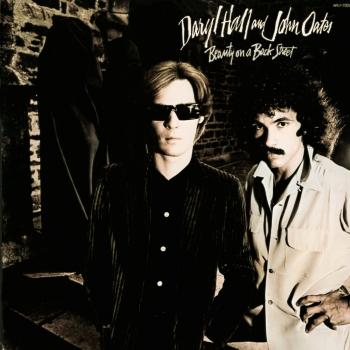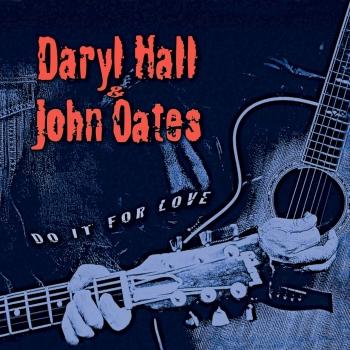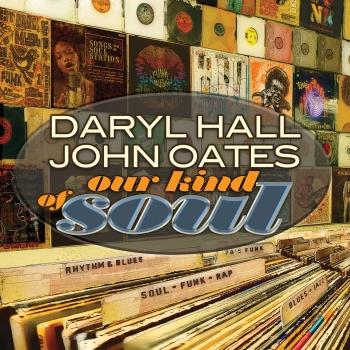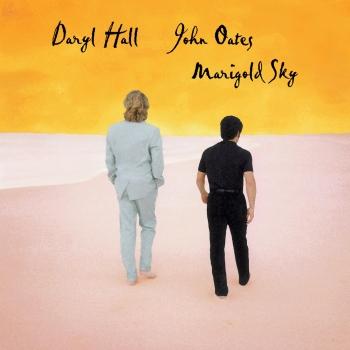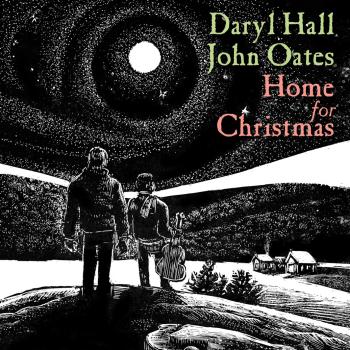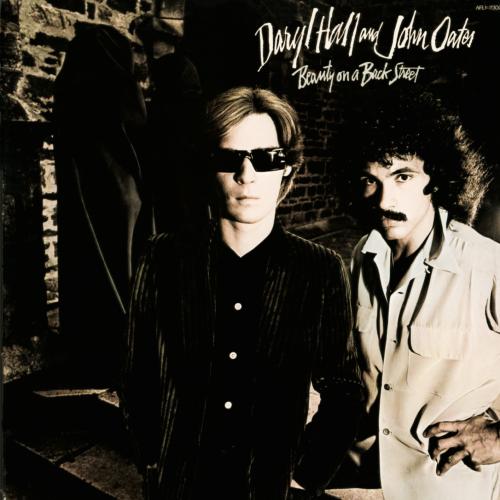
Beauty On a Back Street (Original LP Sequence - Remastered) Daryl Hall & John Oates
Album Info
Album Veröffentlichung:
1977
HRA-Veröffentlichung:
31.08.2018
Das Album enthält Albumcover
Entschuldigen Sie bitte!
Sehr geehrter HIGHRESAUDIO Besucher,
leider kann das Album zurzeit aufgrund von Länder- und Lizenzbeschränkungen nicht gekauft werden oder uns liegt der offizielle Veröffentlichungstermin für Ihr Land noch nicht vor. Wir aktualisieren unsere Veröffentlichungstermine ein- bis zweimal die Woche. Bitte schauen Sie ab und zu mal wieder rein.
Wir empfehlen Ihnen das Album auf Ihre Merkliste zu setzen.
Wir bedanken uns für Ihr Verständnis und Ihre Geduld.
Ihr, HIGHRESAUDIO
- 1 Don't Change 03:33
- 2 Why Do Lovers Break Each Other's Heart? 03:13
- 3 You Must Be Good for Something 03:28
- 4 The Emptyness 03:32
- 5 Love Hurts (Love Heals) 03:08
- 6 Bigger Than Both of Us 04:28
- 7 Bad Habits and Infections 06:00
- 8 Winged Bull 04:35
- 9 The Girl Who Used to Be 04:10
Info zu Beauty On a Back Street (Original LP Sequence - Remastered)
Years of sensational albums and singles, and stellar musicianship are what you can count on with Daryl Hall and John Oates. This award- winning Philly duo has been such a mainstay in popular music for years now, that it s hard to believe that it has been three decades since the vinyl release of their 1977 Top 30 hit album, Beauty On A Back Street. As an amazing follow-up to their previous smash albums - Daryl Hall and John Oates (The Silver Album) and Bigger than Both of Us (Friday Music 1976) Beauty had the reputation of a transitional album with more of a harder edged sonic quality, while maintaining the rock and soul approach, making their trademark sound the much emulated style it is to this day.
1977 was one of the greatest years for rock, soul and popular music. You had breakout albums hitting from almost everyone in those days. Before the theft of music, you would see albums that would normally hit 4 or 5 million units....platinum was part of our culture at the time, and Hall and Oates weren't foreign to the culture either. They had just completed a nice chart run of singles with She s Gone, Sara Smile, Rich Girl, and Do What You Want, Be What You Are.
With the punk rock influence hitting the shores with new albums, as well as bombastic soul efforts, plus arena rock achievements from mega superstar bands., this hit-making duo from Philadelphia knew they had to keep the fans satisfied. So, they reached back to the some of their recognizable star formula and created one of the most enduring and artistically pleasing efforts in their large catalog of albums.
Utilizing the studio wizardry of their past platinum efforts with Christopher Bond, Hall and Oates along with lyricist Sara Allen combined their musical talents and crafted nine new tracks for the sessions at The Sounds Labs from April to May of 1977.
With clever arrangements and natural players like Scotty Edwards and Leland Sklar on bass, the late great Jeff Porcaro on drums and the jazz legend Tom Scott on sax, this album hits its stride with the first hit single Why Do Lovers Break Each Other s Heart? With the correct balance of Philly soul, 50 s doo-wop, and crunchy almost Mick Ronson style guitar riffs, this tune was just the beginning of what was happening in the studio as the album was being caught on tape. A little departure from their previous hit singles, Hall s lead vocal truly captures the lyric with a tonal quality that is reserved only for pros.
As another successful follow-up at radio, Don t Change again relies on some heavier guitar patterns in just the right places, while Daryl belts out another incredible vocal performance. Truly, this was one of the most memorable tunes on this project.
To gravitate towards a more familiar space, their rock n soul trademark sound comes home once more with Bigger Than Both Of Us. The beat of the string arrangement, the horns, the mighty drum sound, the strong vocals.... it just worked out to be another high-point track and album clincher for the duo.
John Oates unleashed some very fine material on this album as well including the soulful Love Hurts (Love Heals) with a memorable sax break from Tom Scott, as well as the l.p. closer The Girl Who Used To Be. With a great story line, chilling guitar work and harmonies, this song is one of his strongest writings ever.
It s difficult to think that this wonderful album has been unavailable for quite some time, until now....Friday Music is proud to re-release this fine album, presented now as a pristine remaster, the first cd in an extensive HALL & OATES REMASTERS SERIES, directly from the original session tapes, with the all of the courtesy, respect & quality that you have come to know and deserve from the Friday Music label. Thoughtfully and painstakingly remastered by the award winning Joe Reagoso (Doobie Brothers, Boz Scaggs, Deep Purple, America)
Daryl Hall, vocals (1, 2, 3, 6, 7, 8), backing vocals, keyboards, synthesizers, guitars, mandolins
John Oates, vocals (4, 5, 9), backing vocals, rhythm guitars, mando-guitar, dulcimer (4), electric piano (4)
Tom Scott, tenor saxophone (5, 9)
Christopher Bond, background vocals (2, 3, 4, 8, 9); keyboards, synthesizers, tonalities, lead 6 and 12 string guitars (8, 9); arrangements, conductor, string arrangements
Jeff Porcaro, drums, electronic drums
Gary Coleman, percussion, sound effects
Lee Sklar, bass (1-4, 6-9)
Scott Edwards, bass (5)
Jim Hughart, second bass (4)
Tommy Mottola, background vocals (3)
Produced by Christopher Bond
Digitally remastered
Hall & Oates
From their first hit in 1974 through their heyday in the '80s, Daryl Hall and John Oates' smooth, catchy take on Philly soul brought them enormous commercial success -- including six number one singles and six platinum albums -- yet little critical success. Hall & Oates' music was remarkably well-constructed and produced; at their best, their songs were filled with strong hooks and melodies that adhered to soul traditions without being a slave to them by incorporating elements of new wave and hard rock.
Daryl Hall began performing professionally while he was a student at Temple University. In 1966, he recorded a single with Kenny Gamble and the Romeos; the group featured Gamble, Leon Huff, and Thom Bell, who would all become the architects of Philly soul. During this time, Hall frequently appeared on sessions for Gamble and Huff. In 1967, Hall met John Oates, a fellow Temple University student. Oates was leading his own soul band at the time. The two students realized they had similar tastes and began performing together in an array of R&B and doo wop groups. By 1968, the duo had parted ways, as Oates transferred schools and Hall formed the soft rock band Gulliver; the group released one album on Elektra in the late '60s before disbanding.
After Gulliver's breakup, Hall concentrated on session work again, appearing as a backup vocalist for the Stylistics, the Delfonics, and the Intruders, among others. Oates returned to Philadelphia in 1969, and he and Hall began writing folk-oriented songs and performing together. Eventually they came to the attention of Tommy Mottola, who quickly became their manager, securing the duo a contract with Atlantic Records. On their first records -- Whole Oates (1972), Abandoned Luncheonette (1973), War Babies (1974) -- the duo were establishing their sound, working with producers like Arif Mardin and Todd Rundgren and removing much of their folk influences. At the beginning of 1974, the duo relocated from Philadelphia to New York. During this period, they only managed one hit -- the number 60 "She's Gone" in the spring of 1974.
After they moved to RCA in 1975, the duo landed on its successful mixture of soul, pop, and rock, scoring a Top Ten single with "Sara Smile." The success of "Sara Smile" prompted the re-release of "She's Gone," which rocketed into the Top Ten as well. Released in the summer of 1976, Bigger than the Both of Us was only moderately successful upon its release. The record took off in early 1977, when "Rich Girl" became the duo's first number one single.
Although they had several minor hits between 1977 and 1980, the albums Hall & Oates released at the end of the decade were not as successful as their mid-'70s records. Nevertheless, they were more adventurous, incorporating more rock elements into their blue-eyed soul. The combination would finally pay off in late 1980, when the duo released the self-produced Voices, the album that marked the beginning of Hall & Oates' greatest commercial and artistic success. The first single from Voices, a cover of the Righteous Brothers' "You've Lost That Lovin' Feeling," reached number 12, yet it was the second single, "Kiss on My List" that confirmed their commercial potential by becoming the duo's second number one single; its follow-up, "You Make My Dreams" hit number five. They quickly released Private Eyes in the summer of 1981; the record featured two number one hits, "Private Eyes" and "I Can't Go for That (No Can Do)," as well as the Top Ten hit "Did It in a Minute." "I Can't Go for That (No Can Do)" also spent a week at the top of the R&B charts -- a rare accomplishment for a White act. H20 followed in 1982 and it proved more successful than their two previous albums, selling over two million copies and launching their biggest hit single, "Maneater," as well as the Top Ten hits "One on One" and "Family Man." The following year, the duo released a greatest-hits compilation, Rock 'N Soul, Pt. 1, that featured two new Top Ten hits -- the number two "Say It Isn't So" and "Adult Education."
In April of 1984, the Recording Industry Association of America announced that Hall & Oates had surpassed the Everly Brothers as the most successful duo in rock history, earning a total of 19 gold and platinum awards. Released in October of 1984, Big Bam Boom expanded their number of gold and platinum awards, selling over two million copies and launching four Top 40 singles, including the number one "Out of Touch." Following their contract-fulfilling gold album Live at the Apollo with David Ruffin & Eddie Kendrick, Hall & Oates went on hiatus. After the lukewarm reception for Daryl Hall's 1986 solo album, Three Hearts in the Happy Ending Machine, the duo regrouped to release 1988's Ooh Yeah!, their first record for Arista. The first single, "Everything Your Heart Desires," went to number three and helped propel the album to platinum status.
However, none of the album's other singles broke the Top 20, indicating that the era of chart dominance had ended. Change of Season, released in 1990, confirmed that fact. Although the record went gold, it only featured one Top 40 hit -- the number 11 single, "So Close." The duo mounted a comeback in 1997 with Marigold Sky, but it was only partially successful; far better was 2003's Do It for Love and the following year soul covers record Our Kind of Soul. ~ Stephen Thomas Erlewine, All Music Guide
Dieses Album enthält kein Booklet







